It’s possible that Kodak’s last medium-format folding cameras – the Tourist line – may also be the most transformable MF “pocket folders” ever made by anybody. Since Art Meripol recently described the Tourist II’s performance in his interesting 5 Frames piece, I’ll hold off pushing film through my earlier model for a bit, and instead, focus on how the Tourist cameras actually “transform.”
NOTE: If you own another highly transformable MF-in-your-pocket, please let us know in a comment!
A Yoga Master
The key to the camera’s flexibility is in this box:
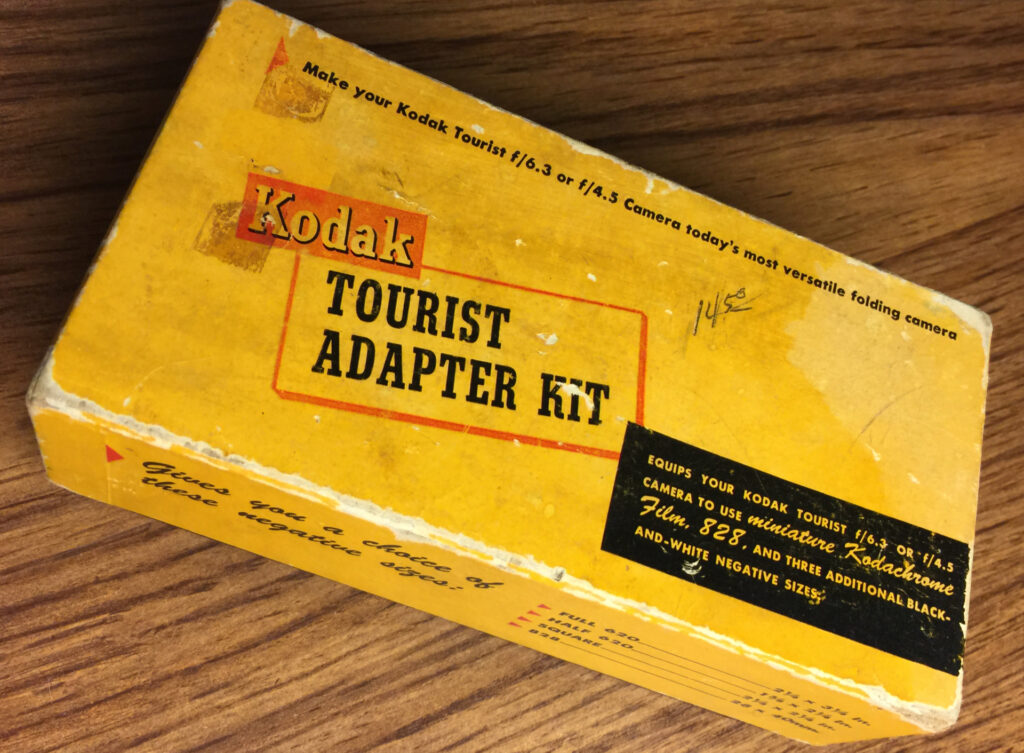 Here’s what’s inside:
Here’s what’s inside:
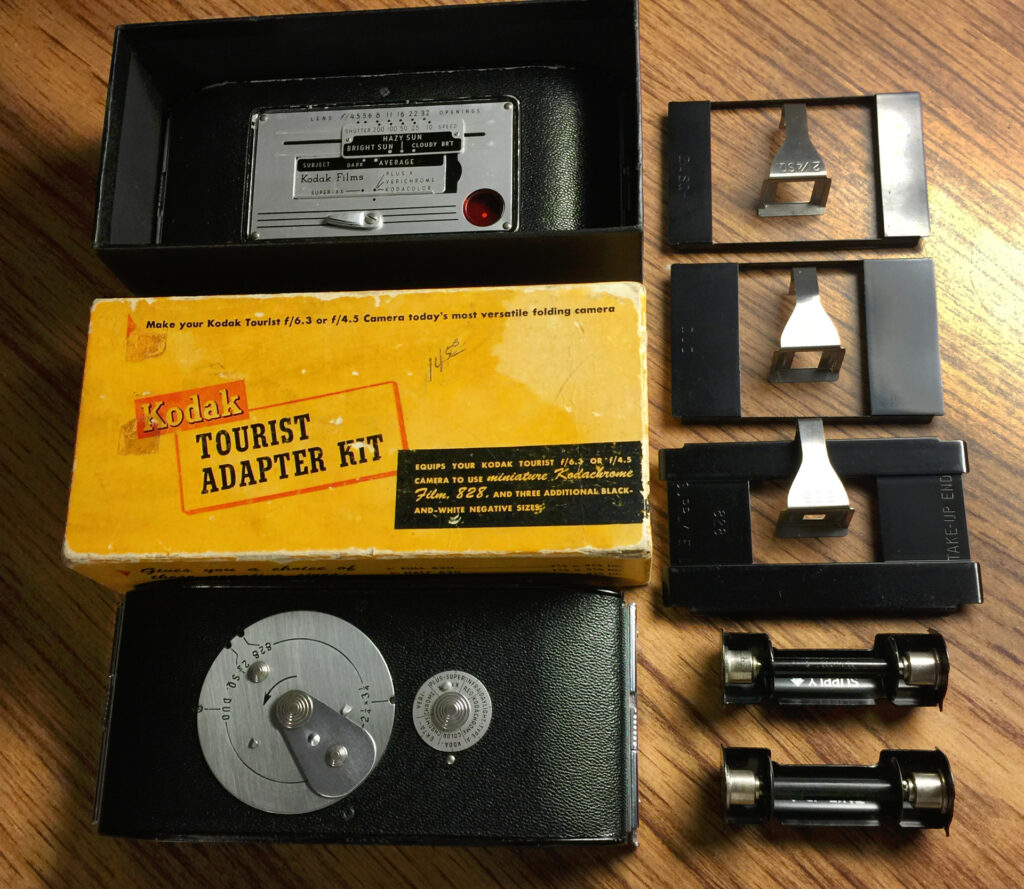 On the upper-left (in the box base) is the Tourist’s standard back. It sports a sort of Sunny-16 slide-rule and a red window positioned to show frame numbers for 2.24×3.25-inch 620 frames. (And yes, this back comes with the camera. I just include it here to show the whole system.)
On the upper-left (in the box base) is the Tourist’s standard back. It sports a sort of Sunny-16 slide-rule and a red window positioned to show frame numbers for 2.24×3.25-inch 620 frames. (And yes, this back comes with the camera. I just include it here to show the whole system.)
Then on the upper right, are film-gate masks for 2.25×2.25-inch square images, 1.625×2.25-inch vertical “DUO” exposures, and 28x40mm 828-film frames. Inside each mask, I placed its corresponding viewfinder mask, which snaps down over the top of the camera.
On the lower-right are two 828 roll-film holders for the camera’s source and take-up chambers. (The kit includes an empty 828 take-up spool, but my photo shows spools in both holders because I added one for a project.)
And finally, below the yellow box lid, is the kit’s replacement back- with dialable red windows for viewing frame numbers for the alternate image sizes. My kit did not include the 24-page instruction book (which is essential) but the marvelous Butkus site has it . Also not in my kit was its carrying case, but I improvise.
In Operation
To shoot any of the optional frame sizes, just remove the standard camera back, snap the desired mask onto the film gate, insert the 828 film holders (if needed), load 620 film (or 828 if that’s what you’re shooting), mount the kit’s optional back on the camera, and turn its dial to the desired frame size. NOTE: As you can see in the following close-up of the two backs, the Adapter Kit’s (top) has its own setting for full-frame 2.24×3.25-inch images. So it can be left on for all four image sizes.
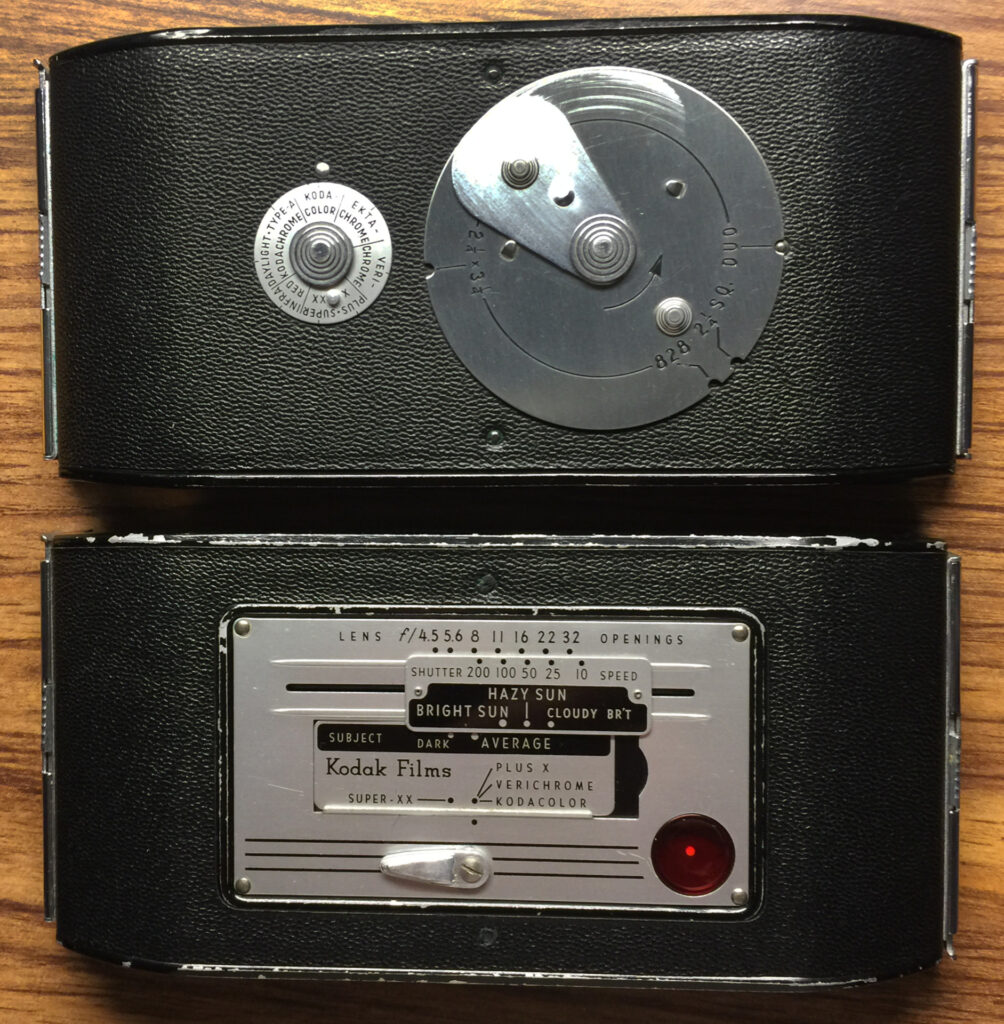 But Wait, There’s Just a Smidge More
But Wait, There’s Just a Smidge More
Kodak said that the Adapter Kit is only for Tourist models with f/6.3 and f.4.5 lenses, which would exclude those with slower lenses. But the three optional film-gate masks also snap into Kodak’s high-end Monitor 620 camera! And the kit’s 828 film holders fit into its supply and take-up chambers. However, one can’t use the kit’s optional camera back and viewfinder masks.
This isn’t necessarily a deal-breaker, though. One could still use the film-gate masks to shoot different frame sizes with the Monitor’s world-class lens. You’d just need to formulate blind-wind-on strategies for frame sizes other than full-frame 2.24×3.25.
It makes me wonder, though, whether Kodak similarly used the same film chambers in any of its other 620 cameras (folding or non). If so, at least the film-gate masks might also work in them.
NOTE: In a three-part article beginning here, I adapted a Kodak 828 camera to shoot 35mm. So the Tourist Adapter Kit’s convenient 828-film mask is at least a step toward doing the same with the Monitor 620. But why would one want to shoot “miniature” 828 (or 35mm) film with a Tourist or Monitor camera? Kodak addresses that in the kit’s instructions. The cameras’ long focal lengths produce higher magnifications than one would get from “native” 828 (or 35mm) cameras. This offers a way to shoot close-up or telephoto photos.
–Dave Powell is a Westford, Mass. writer and avid amateur photographer.
Share this post:
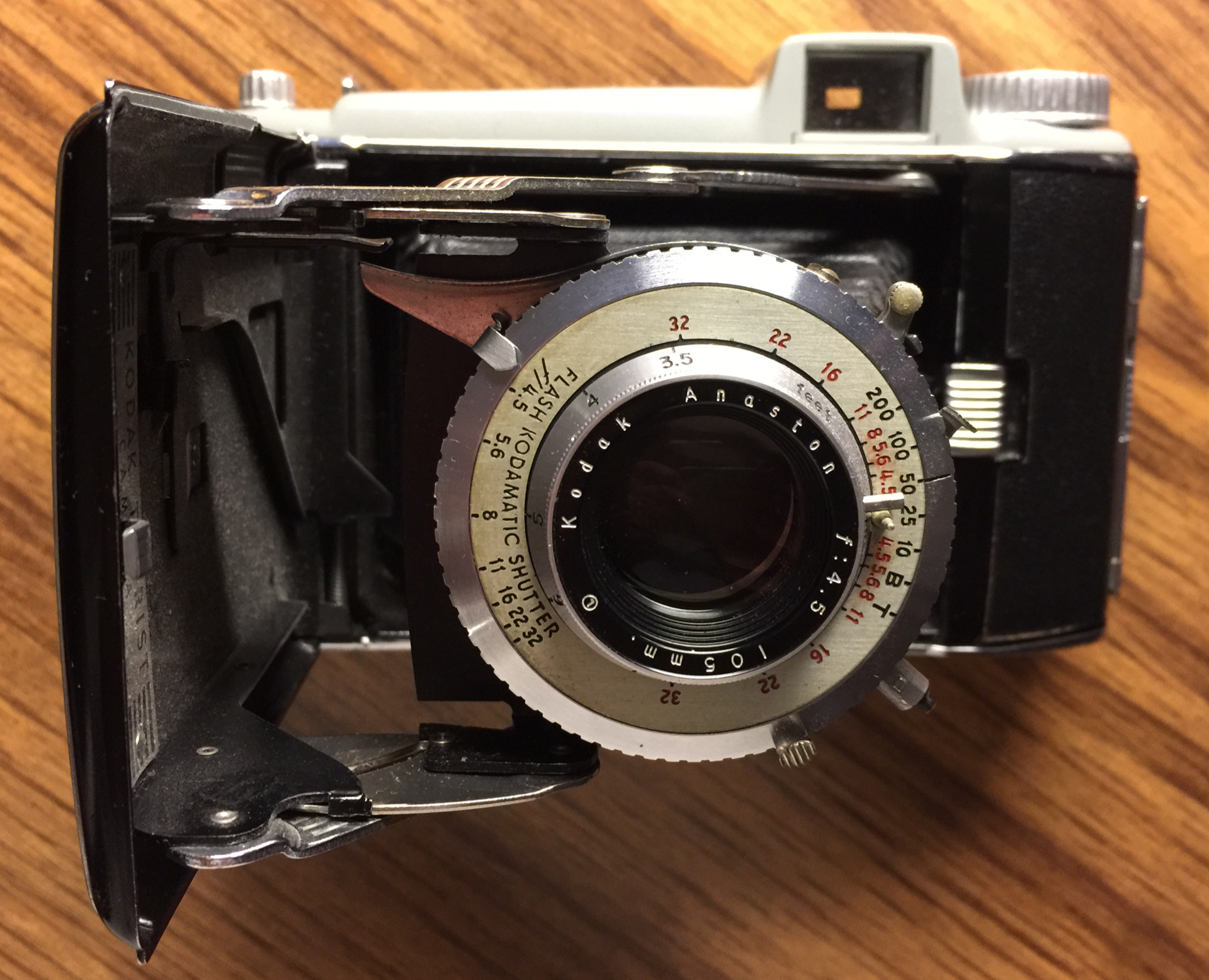
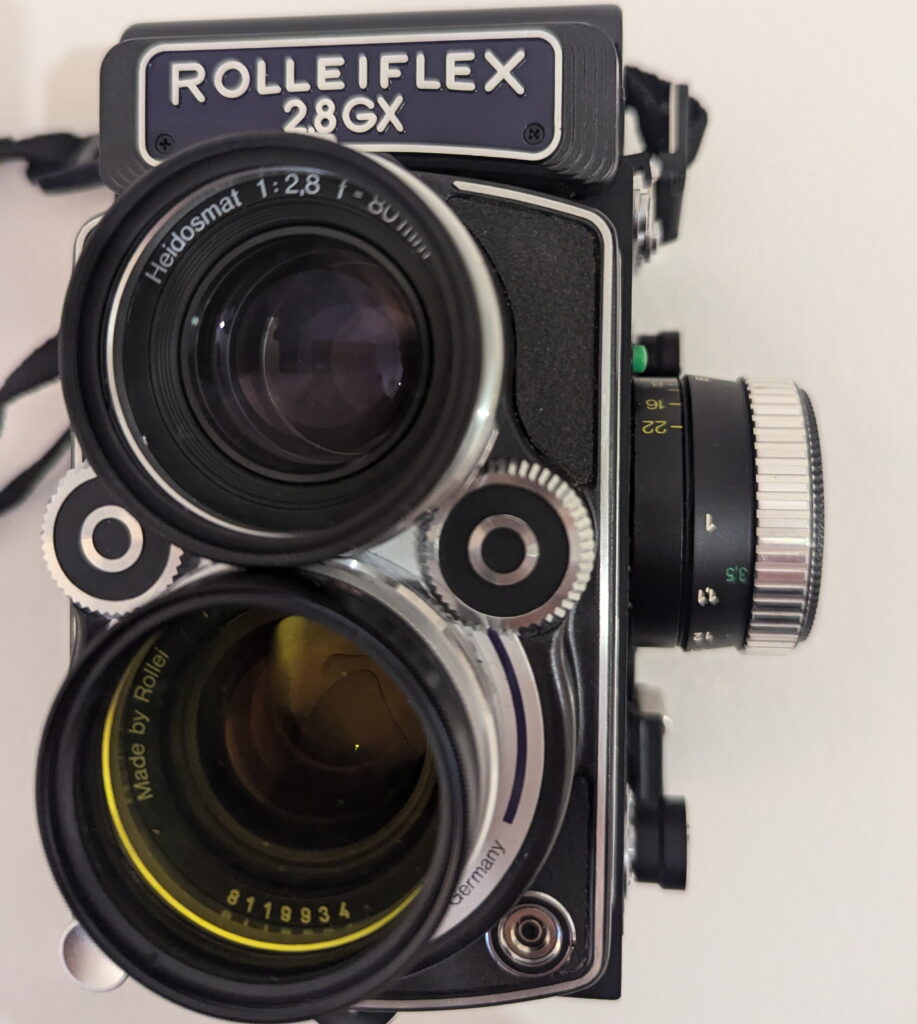
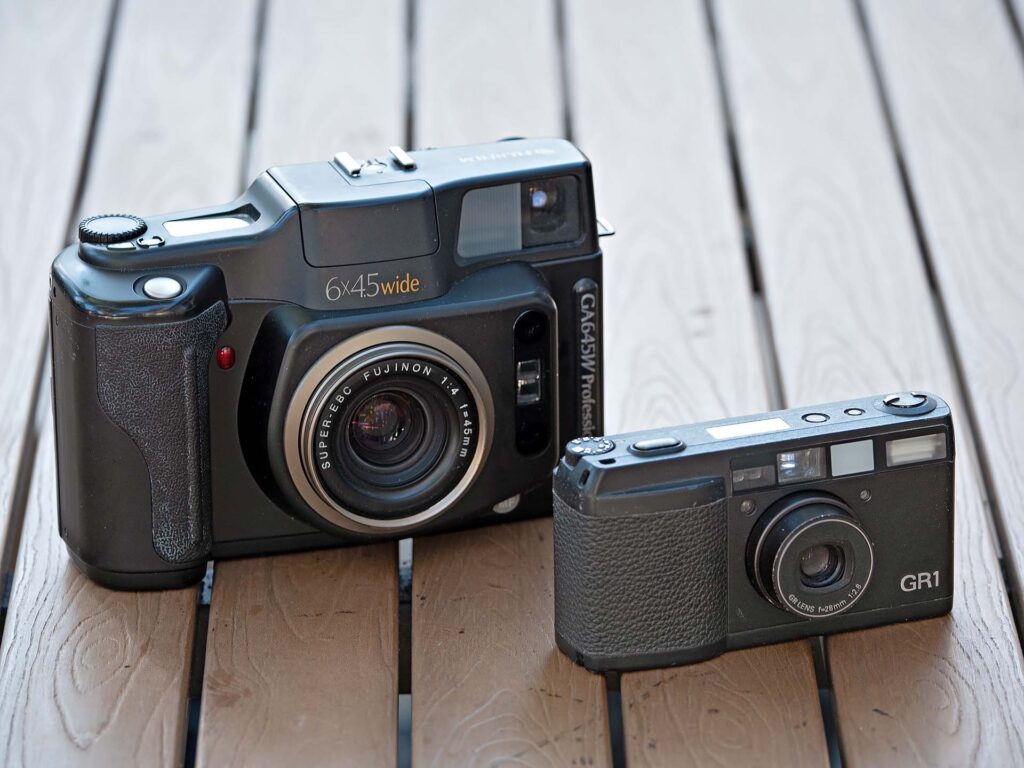
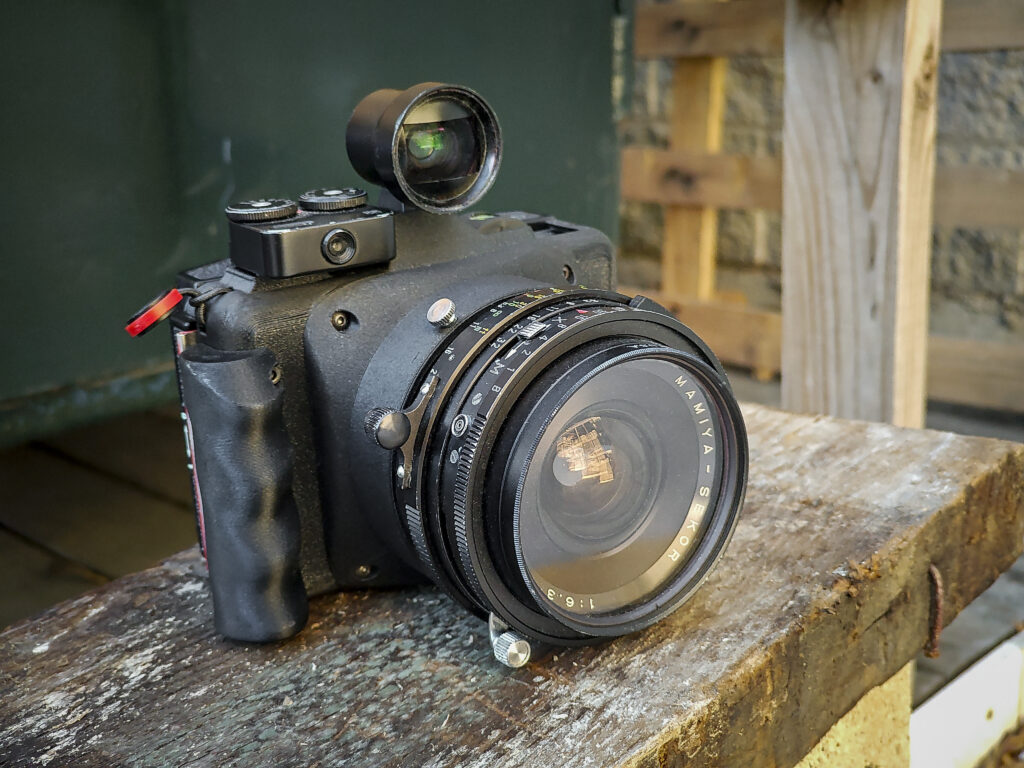
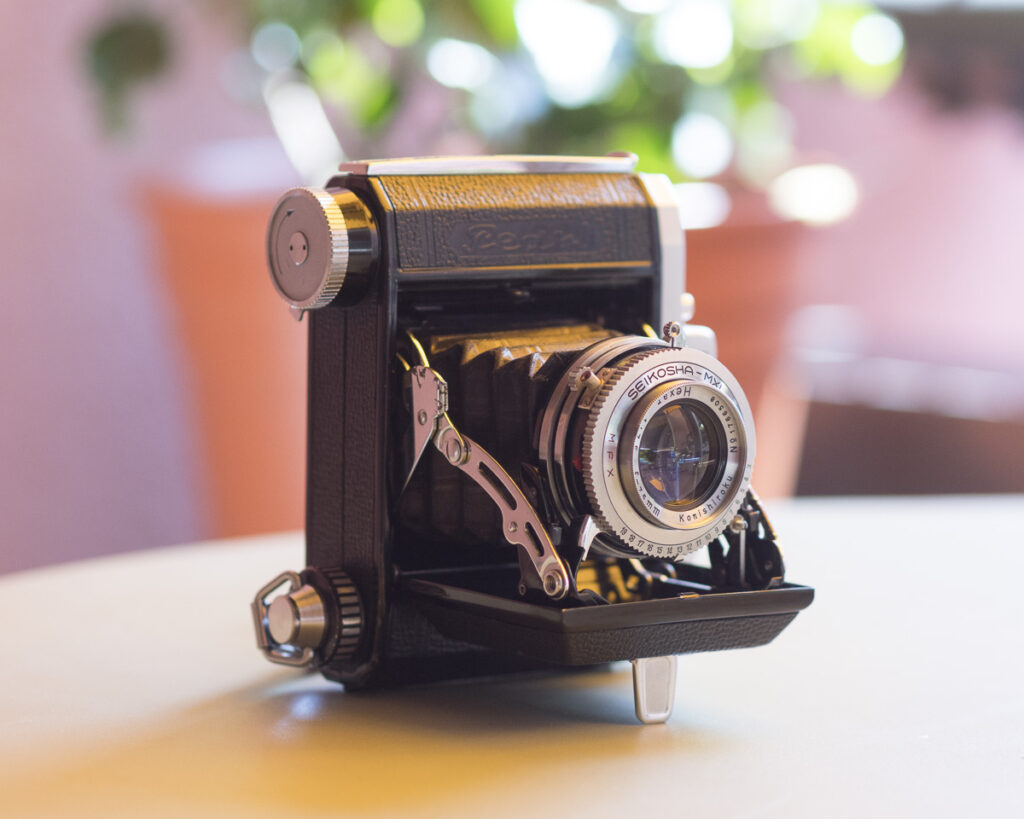




Comments
Stewart Waller on Kodak Tourist – The Most “Transformable” MF Folder?
Comment posted: 09/11/2024
Comment posted: 09/11/2024
Comment posted: 09/11/2024
Art Meripol on Kodak Tourist – The Most “Transformable” MF Folder?
Comment posted: 10/11/2024
Comment posted: 10/11/2024